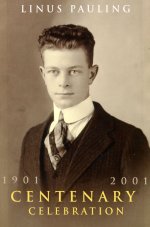Abstracts
Session 1
February 28, 2001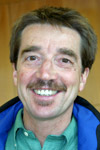
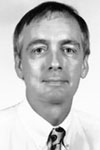
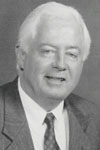
Introductory Remarks and President's Greeting Watch Video
Cliff Mead, Steve Lawson and President Paul Risser open the Pauling Centenary Conference by describing the origins of the event's theme, acknowledging those who organized the occasion and providing an overview of the presentations to be made by the day's speakers. The broad ramifications of Linus Pauling's work are likewise touched upon, as is a more-detailed discussion of his contemporary impact on the Oregon State University campus.
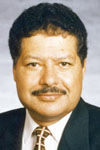
Keynote Address: “Timing in the Invisible” Watch Video
In his keynote address, Ahmed Zewail reflects upon his own relationship with Linus Pauling, mentioning in particular his organization of a symposium to celebrate Pauling's 85th birthday and his editing of The Chemical Bond: Structure and Dynamics, a collection of essays - including two written by Pauling - that trace the development of structural chemistry from 1900 to the present. Zewail then begins a discussion of the work on femtoscience that led to his receipt of the 1999 Nobel Prize for Chemistry.
Broadly speaking, femtoscience may be defined as the study of atomic behaviors that occur in very short periods of time. Prior to discussing the methods and instruments that he developed that have been so vital to the development of femtoscience, Zewail details several earlier historical breakthroughs in the measurement of longer segments of time. These breakthroughs include the development of the first calendar in 4200 BC, the invention of sundials in 1500 BC as well as the first mechanical clocks in 1500 AD, Edward Muybridge's famous photographic studies of galloping horses in 1887 and the first femtoscopic experiments, begun in 1980.
Zewail then offers a few ideas on the reasons why femtoscopic studies are useful to scientists. One primary use of femtoscience is the study of "the fundamental vibrational time scale" - the "spring-motion" movement of two bonded atoms - that occur in tiny segments of time ranging from 10-12 to 10-14 seconds. Within the fundamental vibrational time scale, scientists are able to observe many interesting chemical and biological phenomena including, for example, the mechanics of human vision and the properties of photosynthesis in plants. Femtoscopic experiments also provide a method for researchers to determine the amounts of energy that hold together different types of chemical bonds. In effect, femtoscience allows scientists to, in Zewail's words, "see bonds and atoms."
From there, Zewail discusses the import of femtoscience to the study of physics. In particular, femtoscopic methods have enabled physicists to develop better models of atoms in space without violating the postulates of the Heisenberg uncertainty principle. Likewise, femtoscience has assisted physicists in their quest to improve their understanding of the nature of light. Zewail then describes the experiments and the laser apparatus that his laboratory developed to make their crucial femtoscopic breakthroughs. Zewail's early work focused on relatively simple observations of the periodic stretching and compression of bonds between two atoms. From there, the laboratory moved on to more complex investigations, including measurements of the energy needed to break the bonds of a given atomic arrangement. At the time of his presentation, Zewail's current program of research was oriented toward the structure and function of complex systems, including hemoglobin and DNA, as well as inquiries into the theory of "molecular recognition."
Zewail concludes his talk by providing insight into the future of femtoscopic research. One particularly tantalizing possibility is the prospect of being able to break specific bonds within large chemical systems, a process that would allow scientists to modify and control the outcome of given chemical processes. Another area of focus is the development of more accurate models of biological systems, which might prompt a more complete understanding of certain biological phenomena, such as the poorly-understood idea of protein folding. Zewail likewise describes both contemporary work on the illumination of halogens as well as the evolution of improved experimental instruments, two welcome developments which, in tandem, suggest that Zewail's thoughts on future avenues for femtoscopic research are well within reason.
Following the close of Zewail's prepared remarks, members of the audience were given a chance to ask several questions of the Nobel laureate.
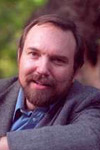
“The Price of Controversy” Watch Video
Hager's talk focuses on the very real consequences that Linus Pauling faced for the outspoken anti-war and anti-nuclear views that he espoused, beginning shortly after World War II and spanning the duration of his life. Raised in a politically-conservative environment, Pauling was not initially inclined, philosophically, toward the positions that he would eventually advocate. Hager suggests that Pauling's radicalization, when it came, was swift and prompted by two sources: the awesome nuclear devastation of Hiroshima and Nagasaki, Japan in August 1945, and the encouragement of his influential, left-leaning wife, Ava Helen. Hager also touches upon the impact that J.D. Bernal's writings had on the evolution of Pauling's thinking on society, science and warfare, and likewise describes Pauling's response to the rise of Adolf Hitler and the persecution of Jewish populations during the second world war.
Following the war Pauling rather quickly became a prominent figurehead for a growing movement among the scientific community that advocated for civilian control of nuclear technologies. As the Cold War heightened, Pauling's views - in particular his vociferous opposition to nuclear testing - grew increasingly at odds with those of the American political and media mainstream. Hager details the myriad ways in which Pauling was made to pay for his dissident beliefs: he was investigated by a private committee enlisted by Caltech president Lee DuBridge, he was frequently accused of contributing to an international Communist conspiracy, he was forced to defend his beliefs before both state and federal loyalty commissions, his security clearances and passport were revoked, and he was routinely castigated in the press.
Despite the many levels of resistance that he encountered, Pauling continued to speak out for the remainder of his life. Hager suggests that this resiliency was, to a degree, founded in Pauling's upbringing in Oregon - a state defined by independent, "cross-grained" attitudes. Hager honors Pauling's courage and concludes by lamenting the extent to which similar moral stands are now so uncommon within the scientific community.
Session 2
February 28, 2001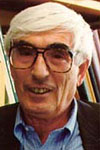
“Space Filling in Molecular Solids” Watch Video
Dunitz's talk constitutes a survey of the historical effort to develop accurate models for the arrangement of atoms within given molecules - a subject of particular interest to Linus Pauling. After sharing a few anecdotes recounting the impact that Pauling made upon his own life and work, Dunitz delves into the primary topic of his presentation, "the space of the size of molecules."
Beginning with the work of Johannes Kepler, chemists have been consumed by the question of how atoms might best be arranged to form molecules. Work on this problem was advanced by the English mathematician Thomas Harriot who, in response to a query issued by Sir Walter Raleigh, developed a theoretical construct for the most-efficient method of arranging cannon balls in the confined spaces of a sea-faring ship. These early investigations by Kepler and Harriot constitute the beginnings of the study of "closest-packing" in molecules.
From there the Russian mathematician Yevgraf Fyodorov proved that only five patterns could be used to repetitively fill a three-dimensional space; a scientific construct that was extended to the world of art by, among others, the Moorish architects of the Alhambra and the Dutch artist M.C. Escher.
In the twentieth century, researchers have become increasingly interested in both developing rules for symmetry in the arrangement of atoms within molecules, and with determining the exact amount of space that a given arrangement can fill on the molecular level. In pursuit of answers to these questions, scientists have determined that crystals require a packing coefficient - as defined by a comparison of molecular volume to total space - of between 65% and 80%. Substances with a packing density lower than 65% do not tend to form crystals, and a packing density of over 80% would not permit enough empty space to allow for the constant atomic vibrations known to exist within molecules.
Dunitz notes the importance of Pauling and Max Delbrück's idea of "molecular complementarity," issued in 1940, which extended contemporary thinking on "closest-packing" to the realm of biology. Dunitz then wraps up his talk by discussing the methods used by modern crystallographers to develop accurate pictures of the molecular world - a process that relies, in part, on equations developed by Albert Einstein nearly a century ago.
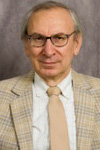
“An American in Munich: Truth and Controversy in the Life and Work of Linus Pauling
during the Golden Years of Physics” Watch Video
Choosing as his theme "controversy in the life and work of Linus Pauling," Paradowski focuses upon the two tumultuous years, 1926-1927, that Linus and Ava Helen Pauling, just three years into their marriage, spent on a Guggenheim Fellowship in Europe. After discussing a handful of famous controversies in the history of science that did not involve Pauling, Paradowski begins to the detail the turmoil that surrounded his receipt of the Fellowship in 1926.
Foremost among the controversies clouding their departure was the fact that Ava Helen had just given birth to the family's first-born son. Her suggestion that this child, Linus Pauling, Jr., be left stateside in the care of relatives for the duration of the Guggenheim trip was a significant source of friction within the Pauling's marriage.
Difficult too were the sets of circumstances surrounding Linus's mother Belle and Ava Helen's father, George Miller. By 1926 Belle Pauling had become very ill due to chronic pernicious anemia, and Linus was uncertain as to the appropriateness of his leaving the continent while his mother's health declined (Belle would, indeed, die while the Paulings were overseas). Ava Helen's situation was somewhat different: she was long-estranged from her father, who had divorced her mother several years prior to the Guggenheim trip. Having set this scene, Paradowski details the somber final farewell in which Ava Helen, Linus and George Miller met for only fifteen minutes while the couple were en route to New York, their point of departure to Europe. It would be Linus Pauling's one and only encounter with his father-in-law.
Once overseas a new set of travails beset the young couple. For starters, Linus seemed conflicted over the propriety of drinking alcohol during the era of Prohibition in his home country. Further, Paradowski notes a strain of emerging anti-Catholicism in the diaries that Ava Helen kept while the duo toured through Italy, and wonders aloud of the extent to which these attitudes may have remained consistent for the duration of the Paulings lives.
The most significant difficulties incurred while overseas took place once the Paulings began their Guggenheim residence in Germany. With the notable exception of Arnold Sommerfeld, the German scientific elite did not warmly-receive their visitor from southern California. German attitudes at that time were rather dismissive of American science, and Pauling's lack of experience with the new quantum mechanics made him seem a minor player to important figures like Wolfgang Pauli and Niels Bohr. This sense of coldness was a source of depression for Linus Pauling who, for the first time in his life, felt like an intellectual inferior to his colleagues. At the same time, strains in Linus and Ava Helen's relationship were exacerbated by the unfamiliarity of their surroundings, and by unhappy news from back home, including the death of Belle Pauling.
Paradowski concludes his talk by sharing a his own opinions on the importance of Pauling's scientific work and providing some insight into Pauling's sense of himself over the final few decades of his life. He notes that Pauling once confided a desire to live to the age of 100 and to mark the occasion by publishing a scientific paper. That he was not able to obtain this goal is unfortunate though, Paradowski suggests, Pauling "is still with us in many ways, in what he had done and so on."
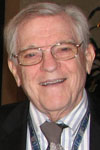
“Life with Father...And Mother” Watch Video
Linus Pauling, Jr., the eldest of Linus and Ava Helen Pauling's four children, uses his elegantly-written presentation to paint a unique portrait of the events, traditions and attitudes that shaped everyday life in the Pauling household.
Pauling begins his talk by discussing his parents' attitudes toward different career paths, noting their strong bias toward the virtues of pure scientific research. From there, Pauling, Jr. moves on to a fascinating discussion of family traditions. Christmas celebrations were especially memorable and typically involved pleasant excursions to harvest mistletoe, secure a Christmas tree and decorate the Pauling home in the wee hours of Christmas Eve. Of similar importance were regular family trips to the Painted Canyon desert. Pauling recounts with fondness the logistical difficulties faced by anyone seeking to travel to this remote location - the route was unmarked and unpaved - and the exhilarating sense of isolation and self-reliance that, for the family and many friends, made the desert such an attractive recreational location.
Pauling also provides telling into his mother's character. Ava Helen is depicted as a strong and able woman, a loving mother and influential wife, and also a flawed individual, prone to jealousies and an occasional arrogance.
Pauling next engages in a long discussion of a topic keenly important to the entire Pauling family - cars. Reminiscing of a Model-T Ford, then a Model-B sedan, followed, triumphantly, by a Lincoln Zephyr - "evidence of Pop's increasing affluence" - Pauling touches on a number of family stories, including an accident incurred by a young Linus, Sr. while in transit from California to Oregon to be wed to Ava Helen Miller.
Pauling closes his talk by reflecting upon the means by which discipline was instilled in the Pauling household, and then sharing the feelings that defined his leaving the Pasadena home and becoming a man, with a family and responsibilities of his own. At this point, finally, Pauling notes, "I could somewhat more objectively view my parents; love them, warts and all, and even help them."
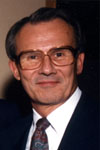
Panel Discussion and Closing Remarks Watch Video
The Pauling Centenary Conference concluded with an amusing and informative panel session in which the day's five speakers, under the moderation of OSU President Emeritus John Byrne, reflected on one another's presentations and responded to audience questions. Topics discussed included Pauling's reconciliation with the California Institute of Technology (an event that finally came to pass some two decades after his bitter resignation in 1963); the potential publication time frame for Robert Paradowski's eagerly-awaited multi-volume biography of Pauling; the import of Ava Helen Pauling as a world-historical figure; and her husband's legendary rigor as a thinker and clarity as a writer.
Amidst the discussion, Byrne shares an amusing document from the Pauling archive in which the famed scientist recounts, with exacting precision, his experience of hallucinating while lying in bed one night in the hours following a cocktail party. Likewise, in a conversation about Pauling's skill as a lecturer, Jack Dunitz shares the details of a memorable day in Pauling's freshman chemistry survey, wherein Pauling theatrically demonstrated the radically-differing properties of sodium when combined with water and with alcohol.
A significant portion of the panel discussion is devoted to Pauling's legacy as a peace activist and reflects directly upon many of the issues raised in Tom Hager's presentation. The event concludes with each panelist offering his thoughts on the question, "if we were to meet 50 years from now, what would we remember most about Linus Pauling?"
Related Names: Ahmed Zewail, Tom Hager, Jack Dunitz, Robert Paradowski, Linus Pauling, Jr.


